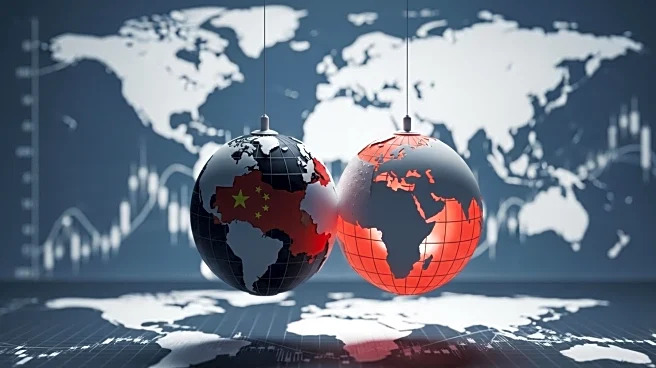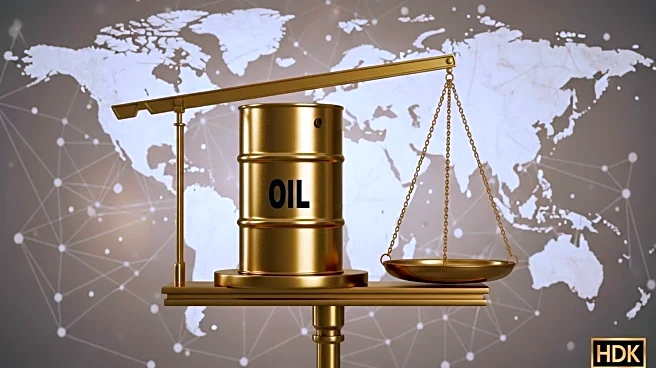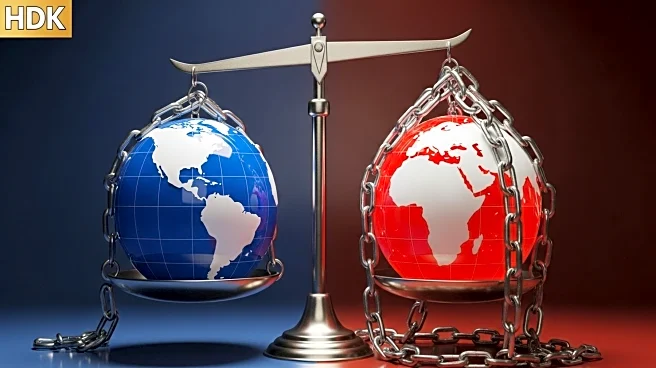What's Happening?
Oil prices have dropped by 1.5% due to ongoing trade tensions between the U.S. and China, coupled with warnings from the International Energy Agency (IEA) about a potential supply glut in 2026. Brent crude futures fell to $62.39 per barrel, while U.S. West Texas Intermediate Crude settled at $58.70. The IEA predicts a surplus of up to 4 million barrels a day next year, as OPEC+ and its rivals increase production amidst sluggish demand. The tensions between the U.S. and China are exacerbating market uncertainties, with President Trump planning to meet Chinese President Xi Jinping in South Korea to address these issues.
Why It's Important?
The decline in oil prices reflects broader economic uncertainties and the impact of geopolitical tensions on global markets. The potential supply glut could lead to prolonged price instability, affecting oil-dependent industries and economies. The U.S.-China trade tensions are particularly significant, as they could influence global economic growth and energy demand. The situation underscores the interconnectedness of global markets and the potential for political decisions to have far-reaching economic consequences.
What's Next?
The upcoming meeting between President Trump and President Xi Jinping may offer a chance to ease tensions and stabilize oil markets. However, the threat of increased tariffs and export restrictions could further strain relations and impact global trade. The oil industry may need to adapt to changing market conditions, potentially leading to shifts in production strategies and investment priorities. Stakeholders will be closely monitoring developments to assess the potential impact on future oil prices and market dynamics.
Beyond the Headlines
The current situation highlights the vulnerability of global markets to geopolitical events and the importance of diplomatic efforts in maintaining economic stability. The potential supply glut raises questions about the sustainability of current production levels and the need for strategic adjustments in the energy sector. As countries navigate these challenges, there may be increased focus on diversifying energy sources and reducing reliance on oil.












